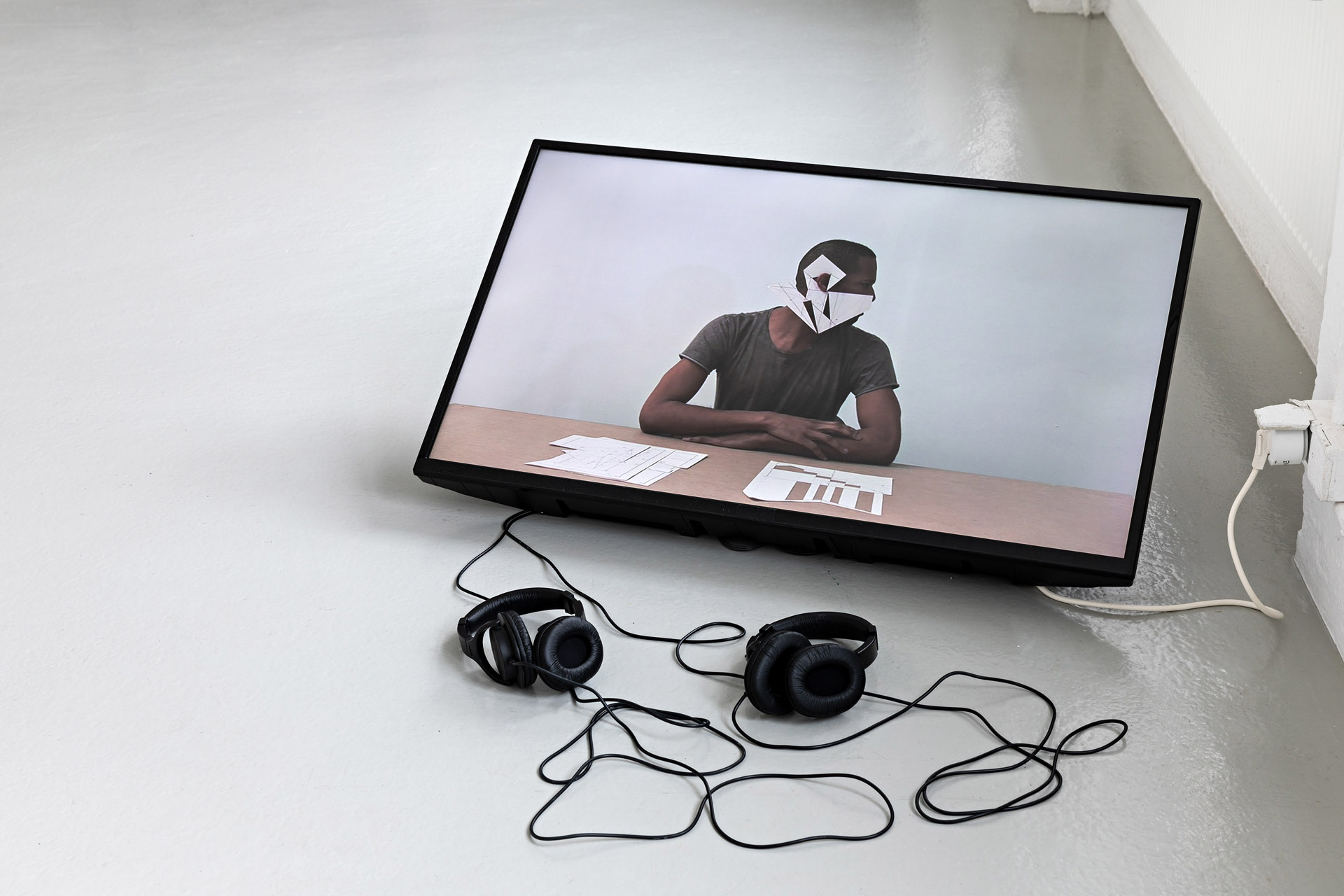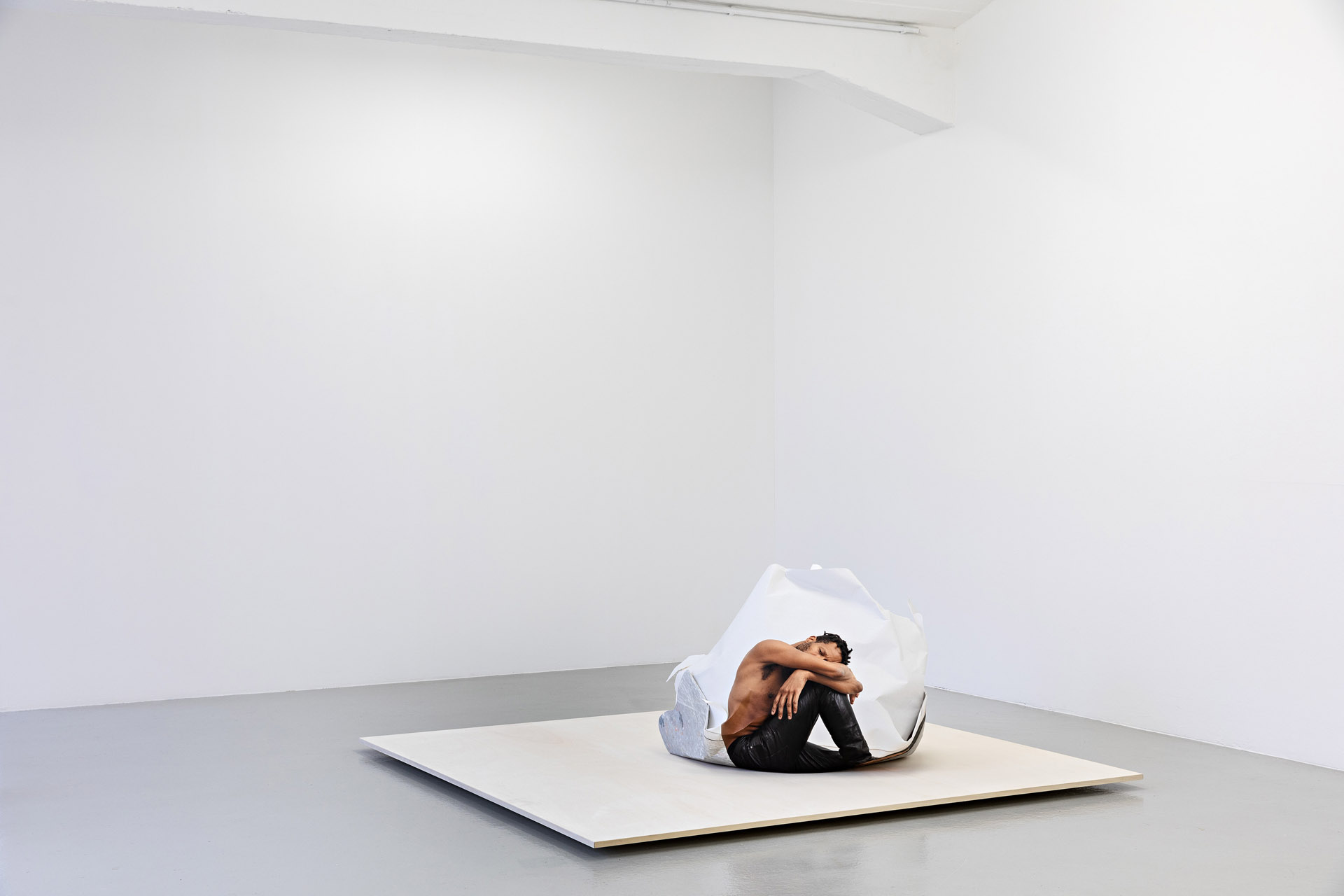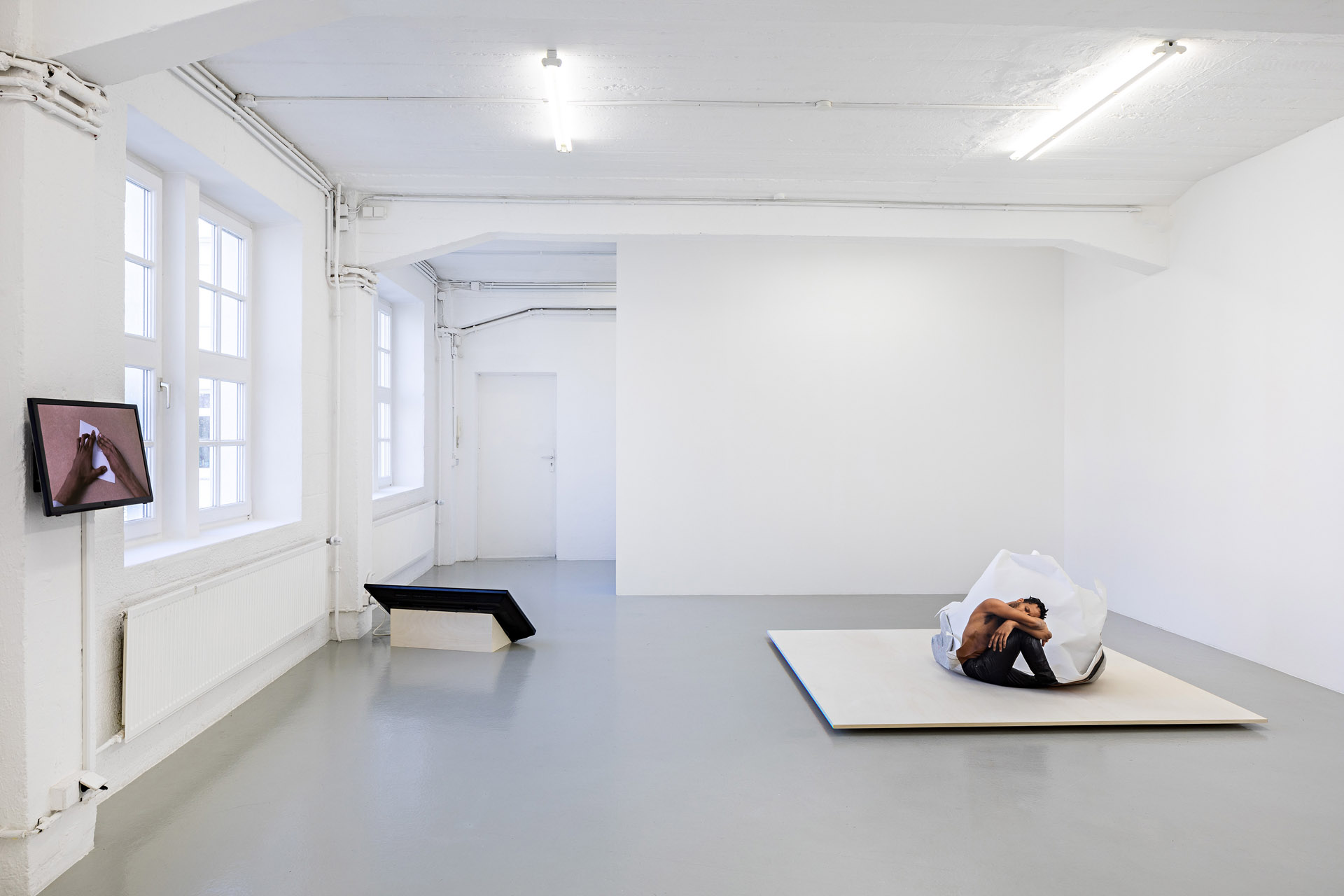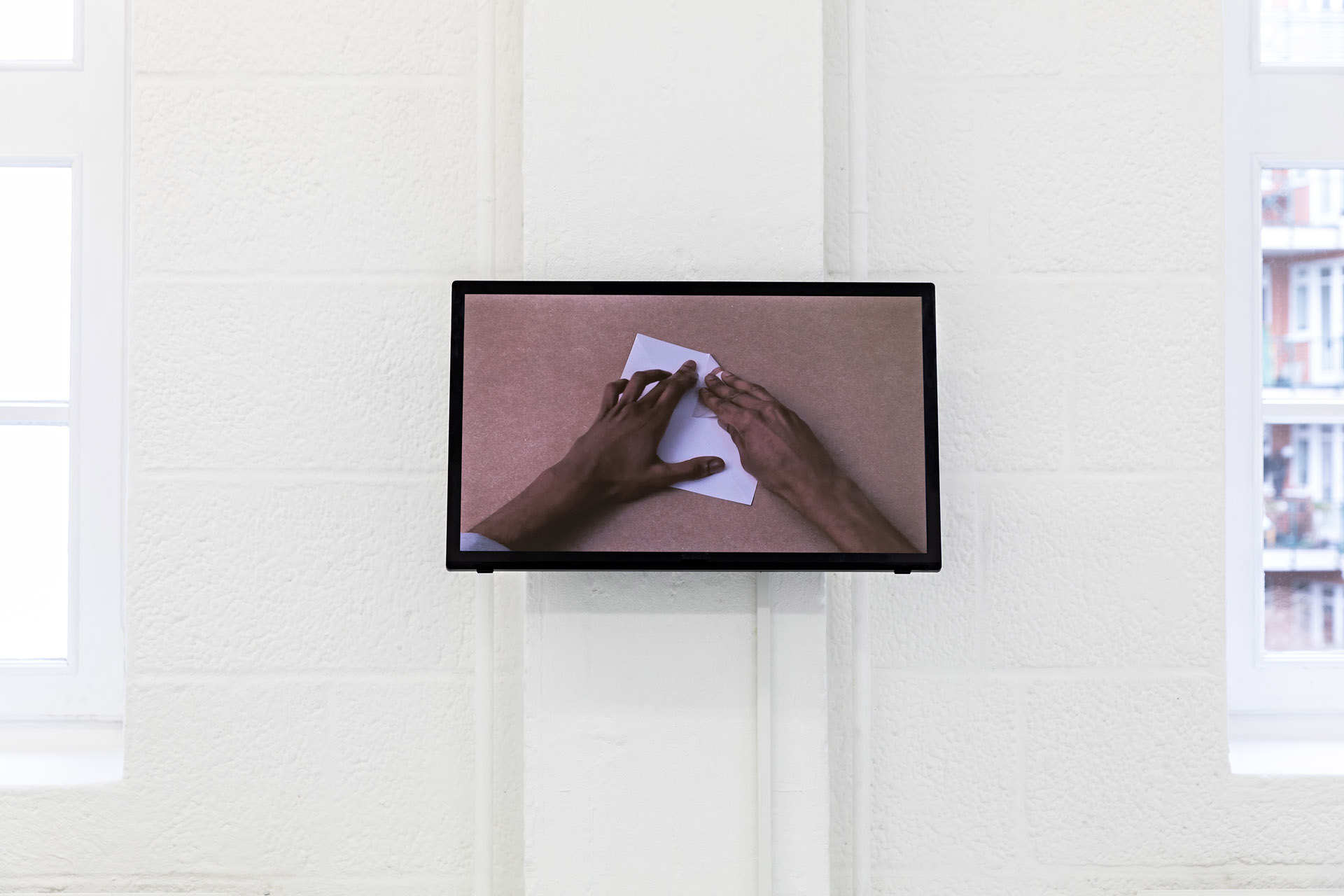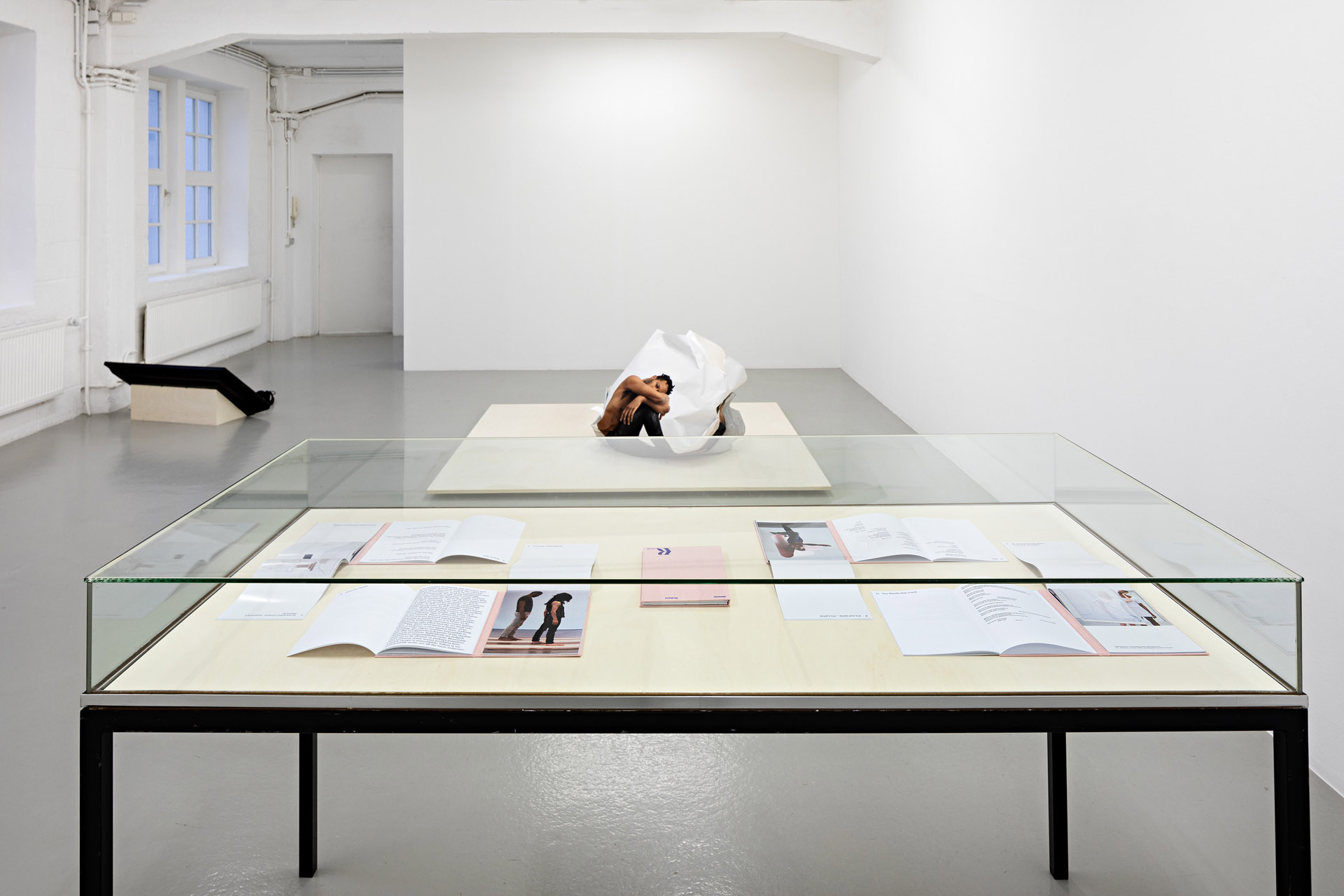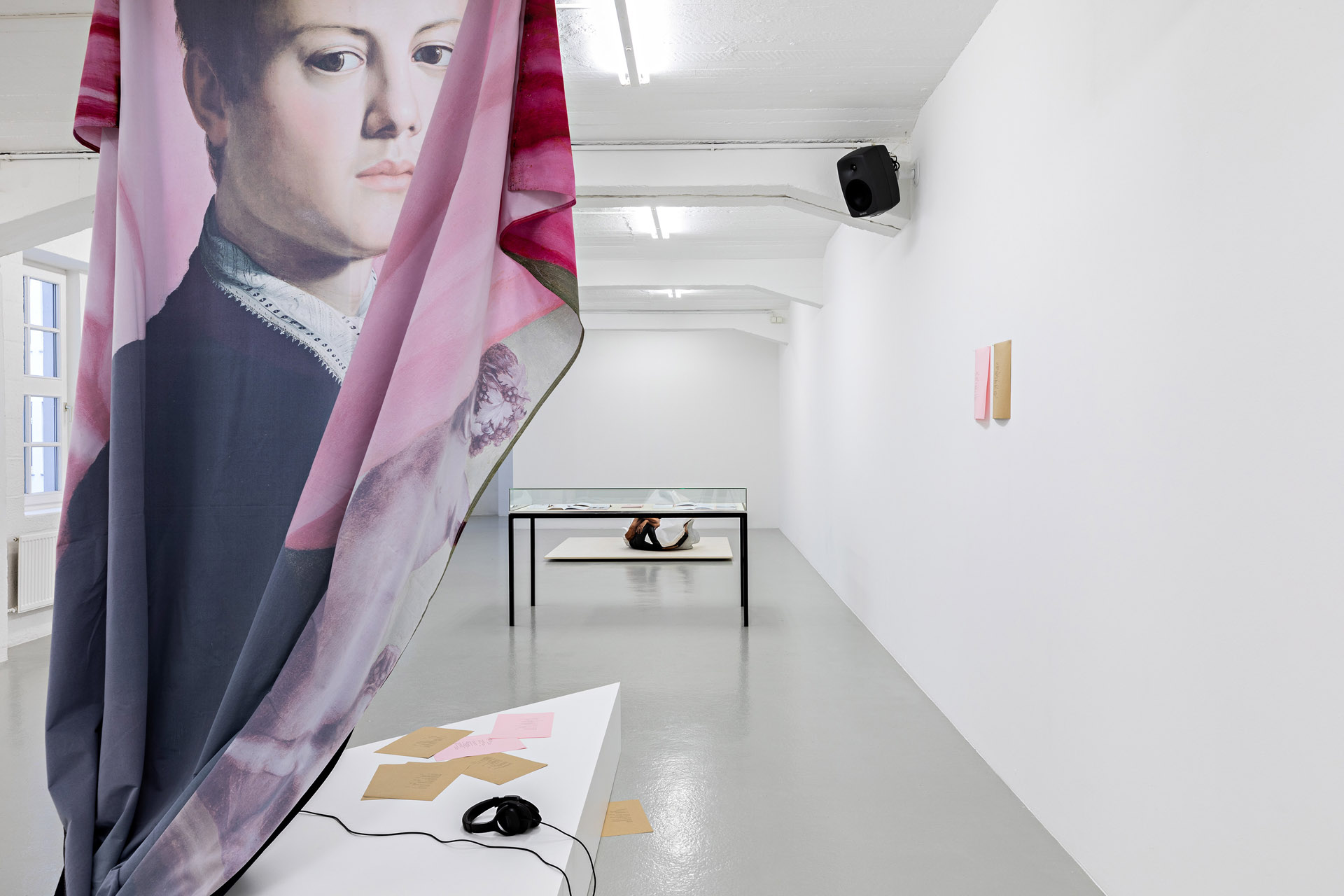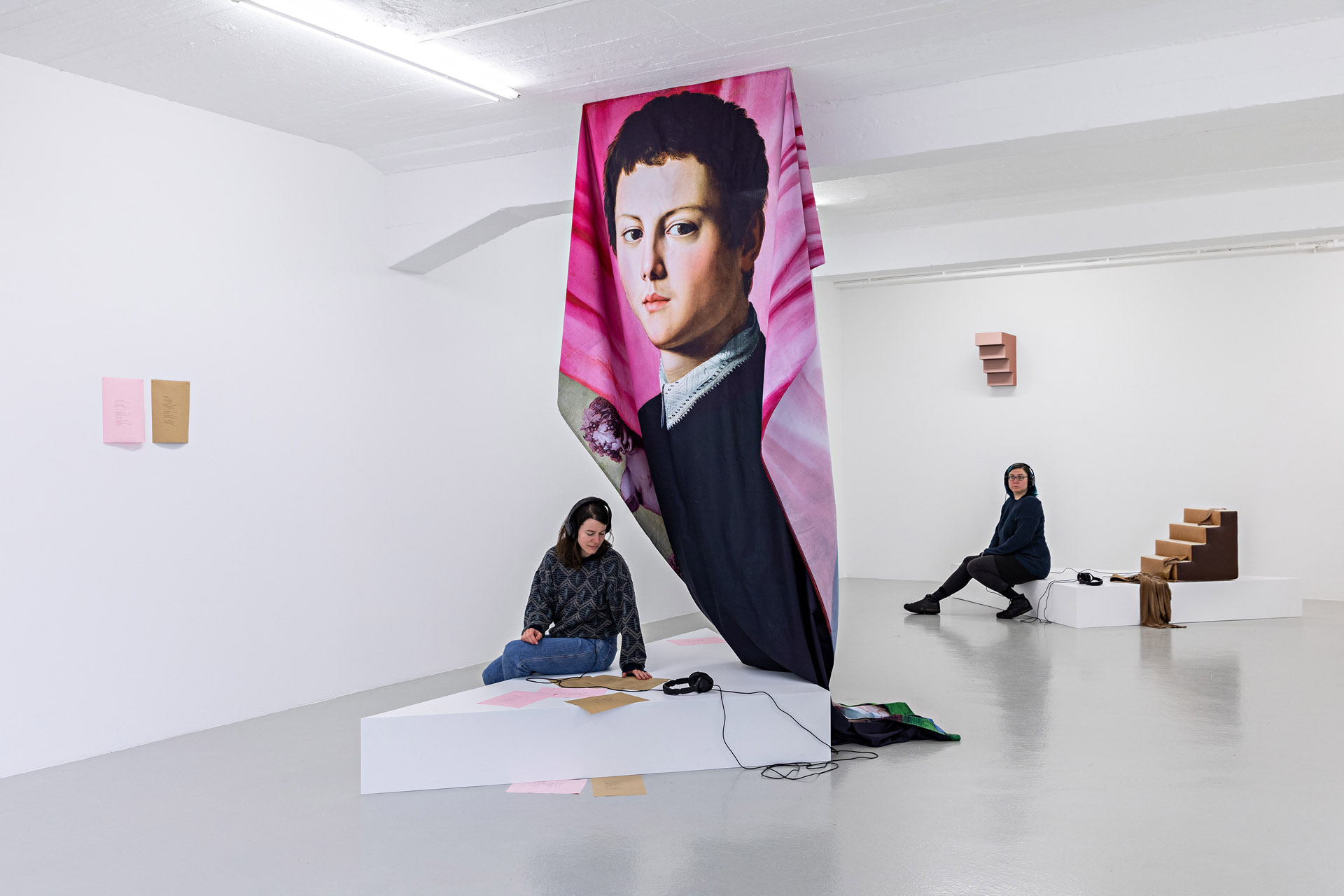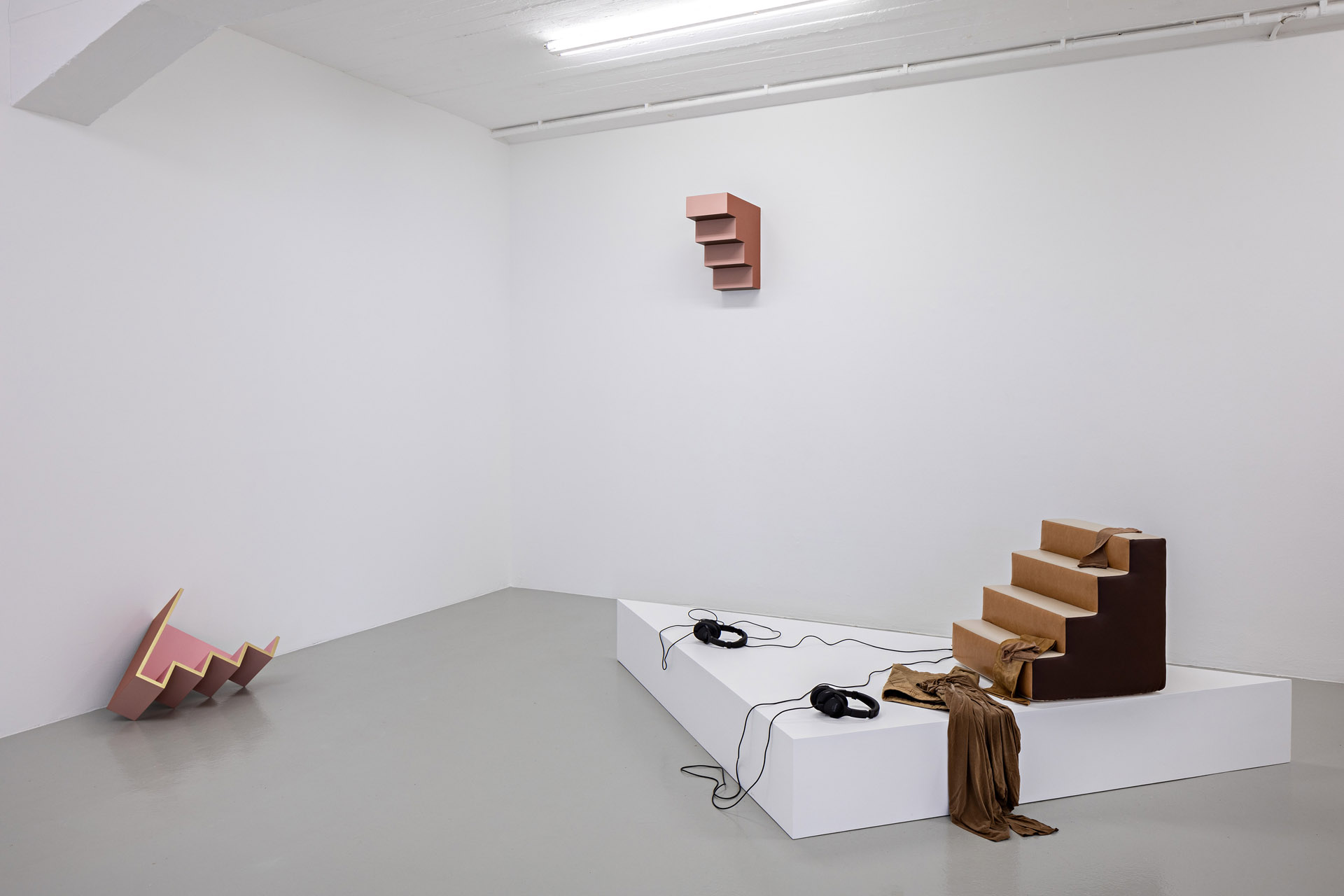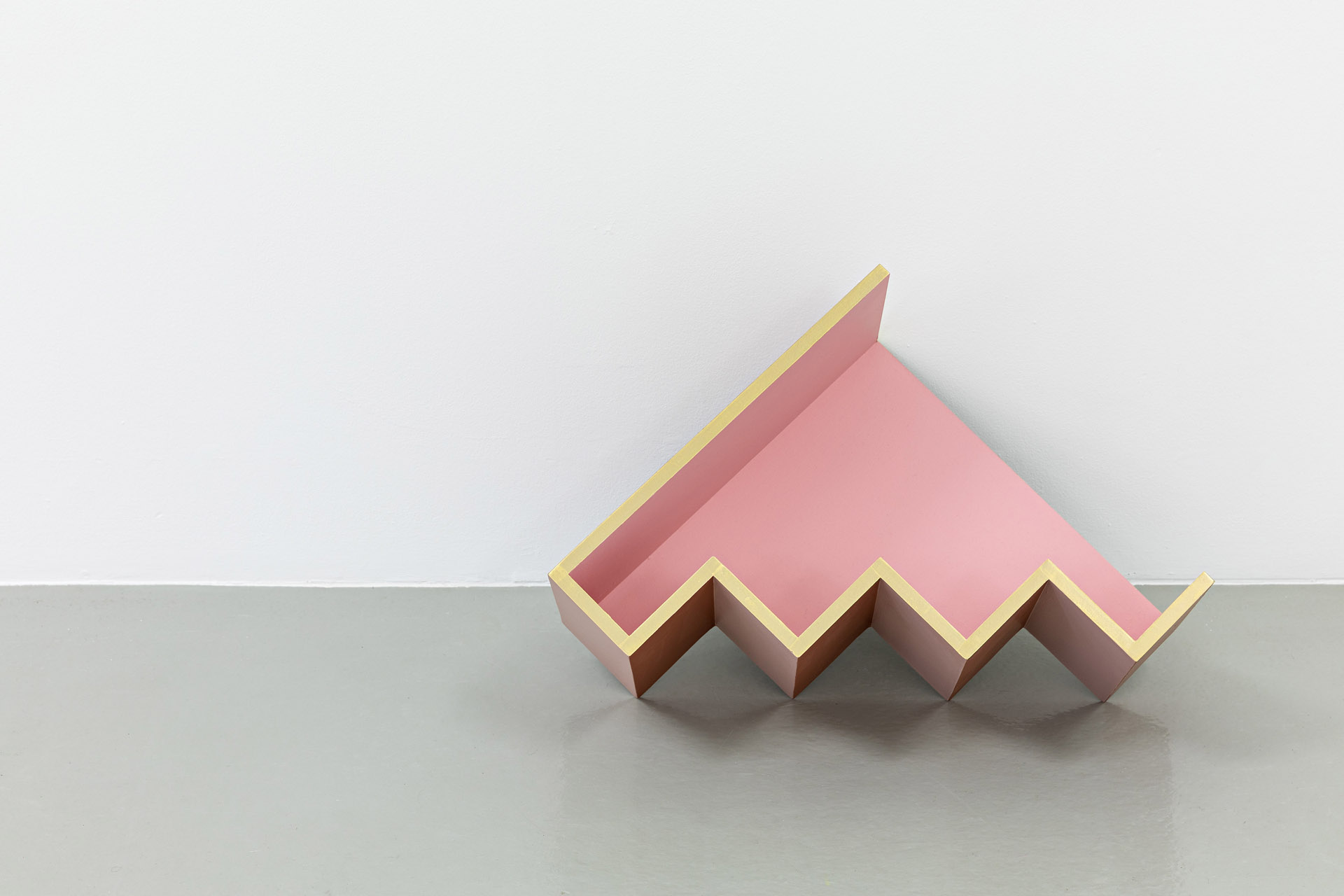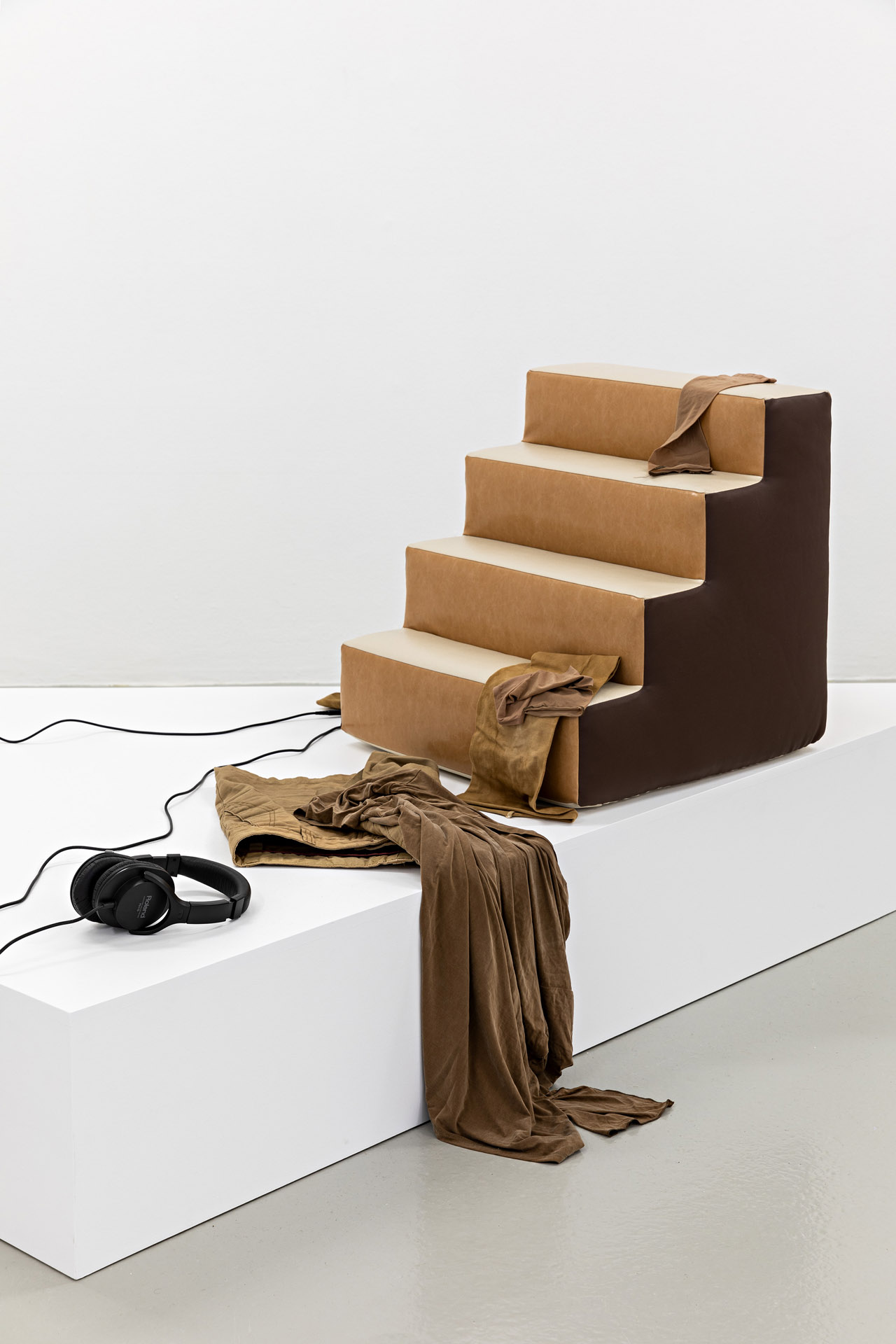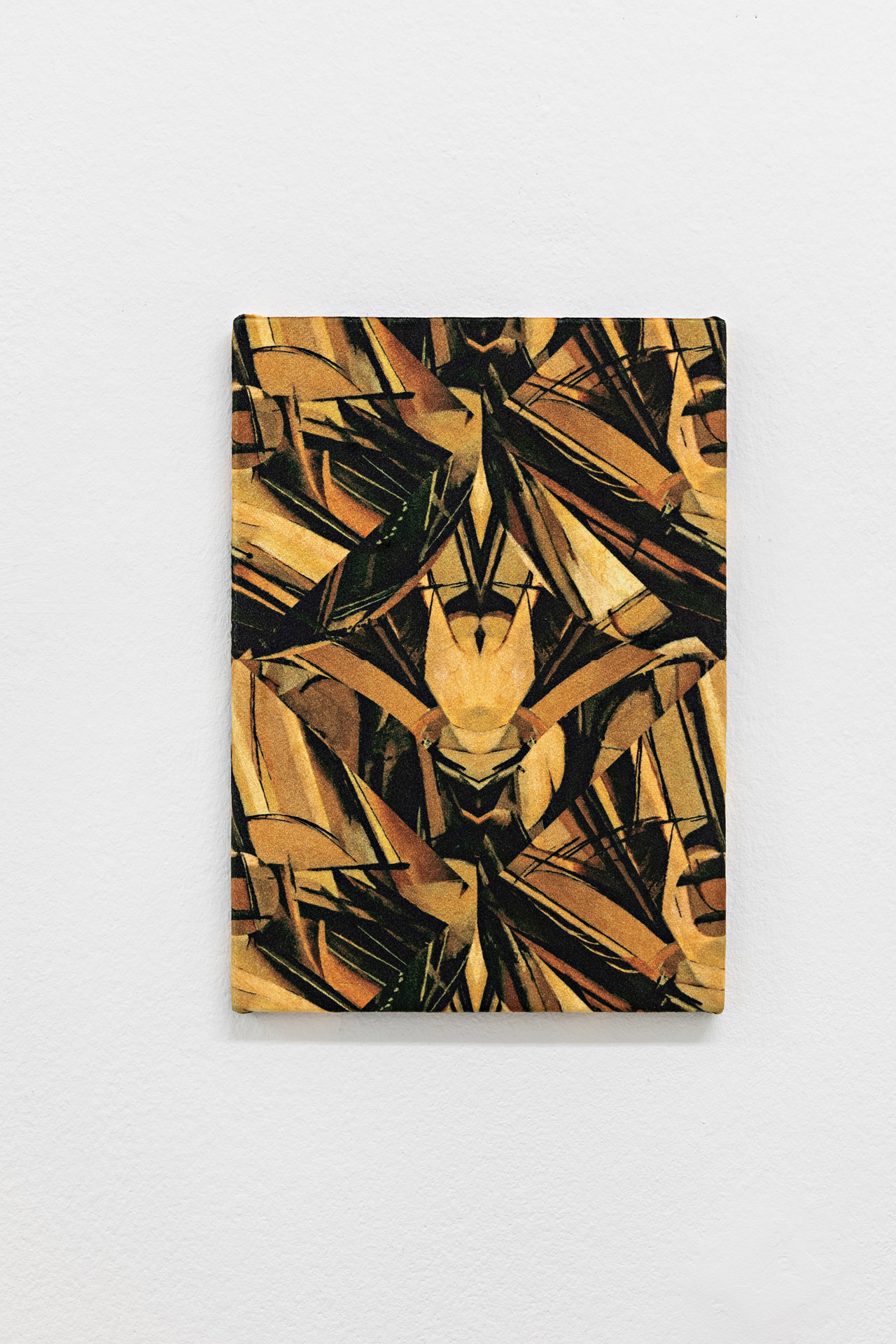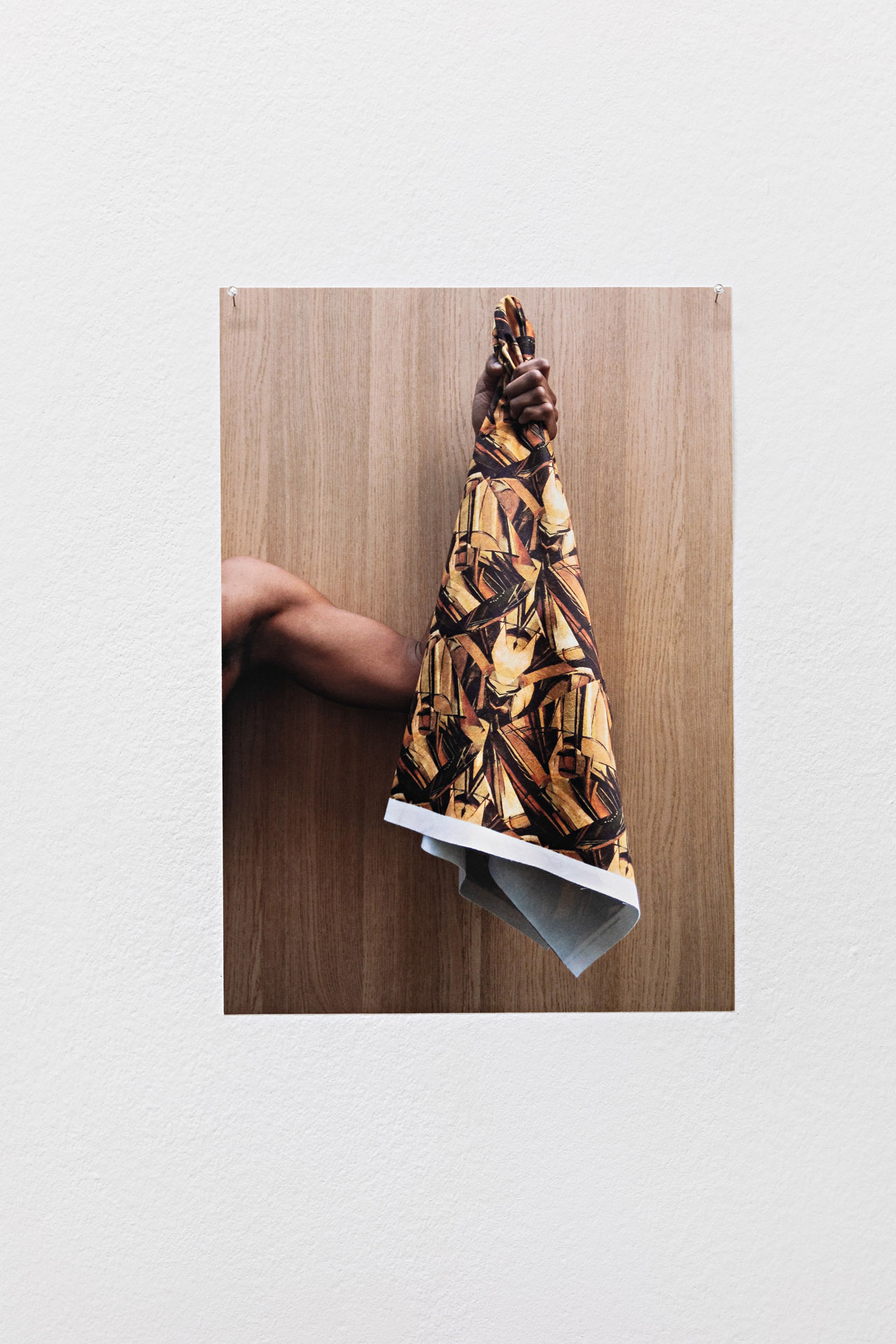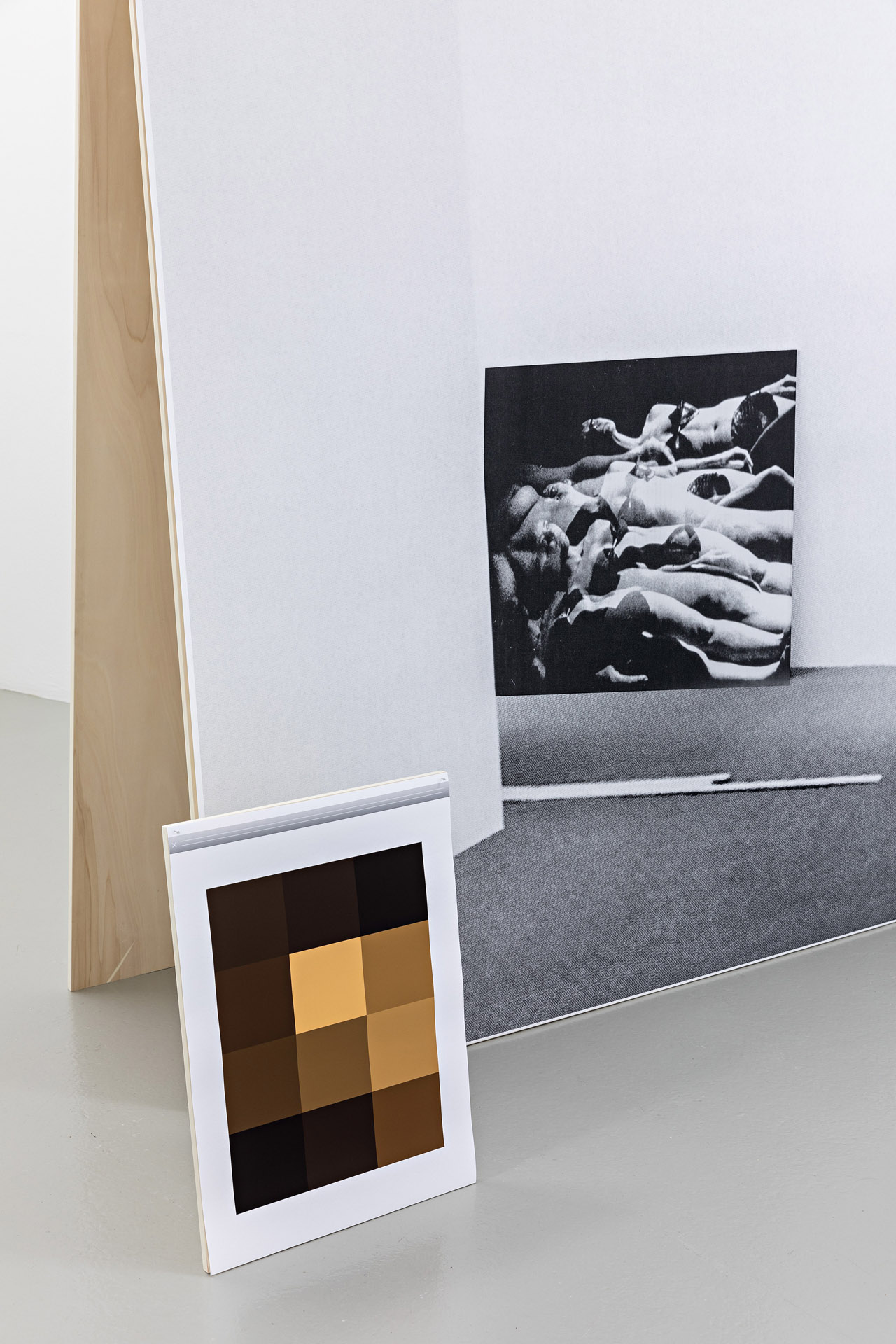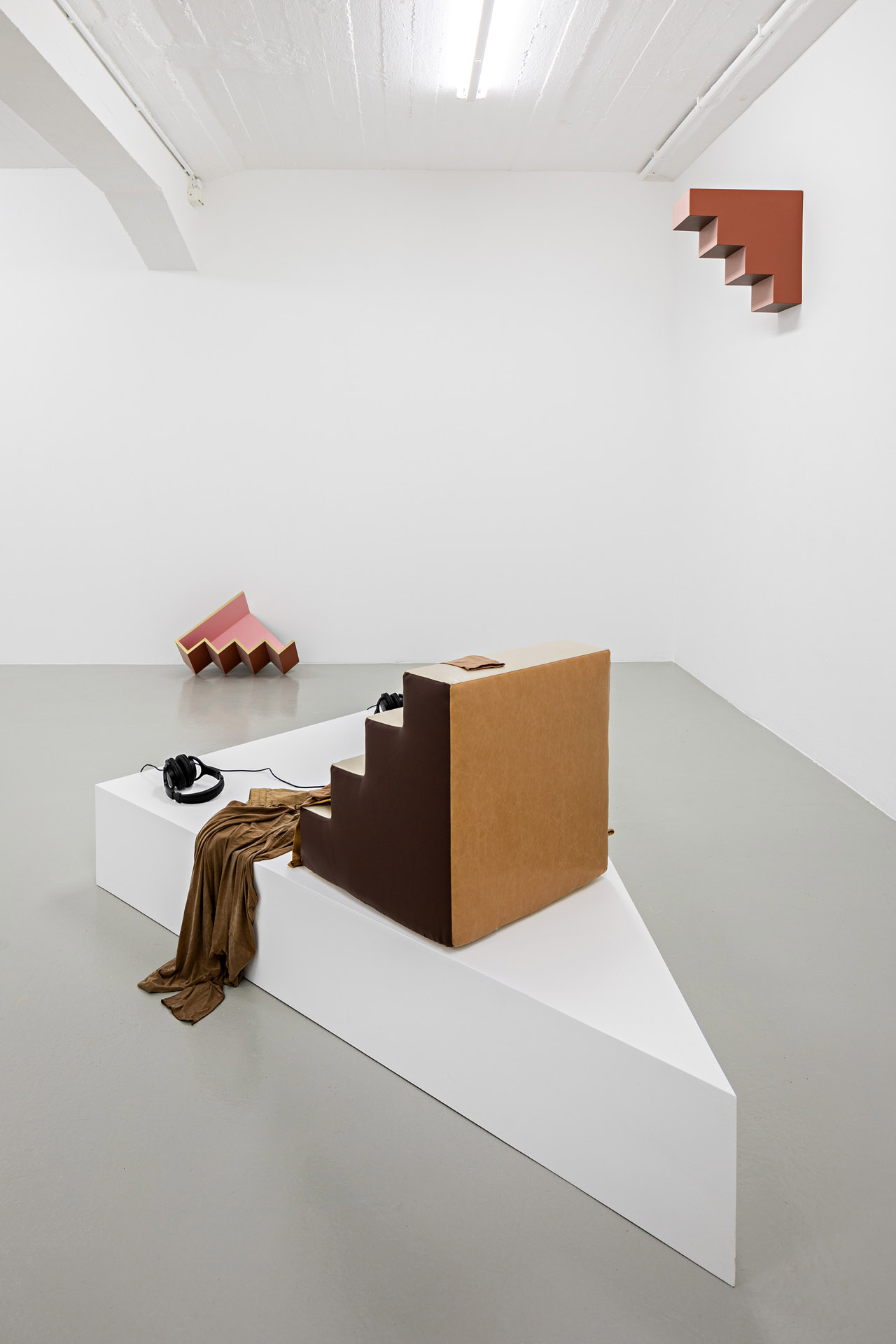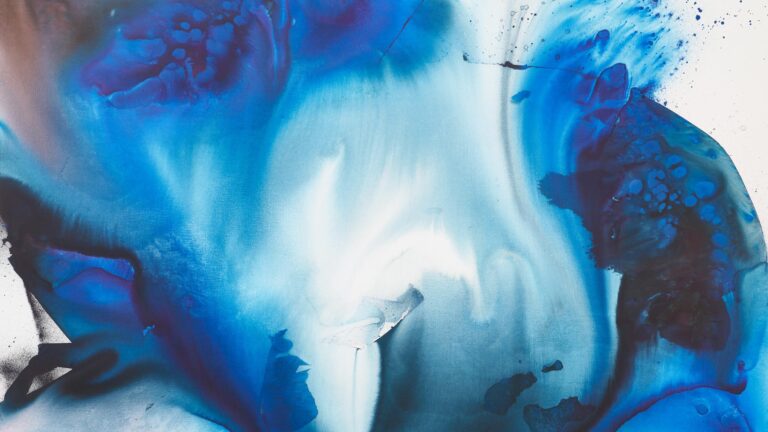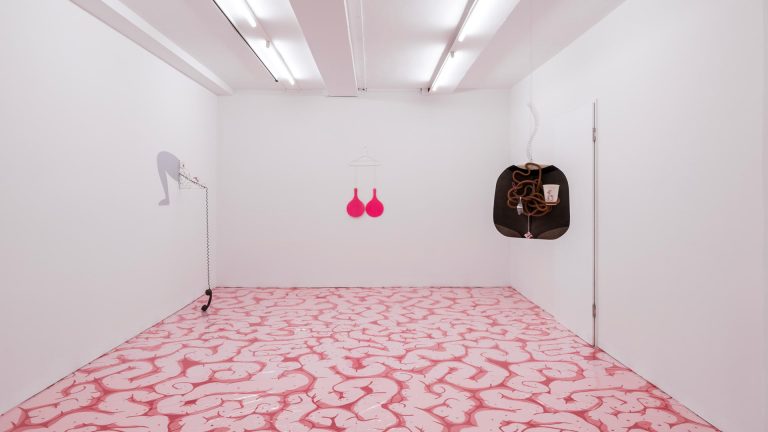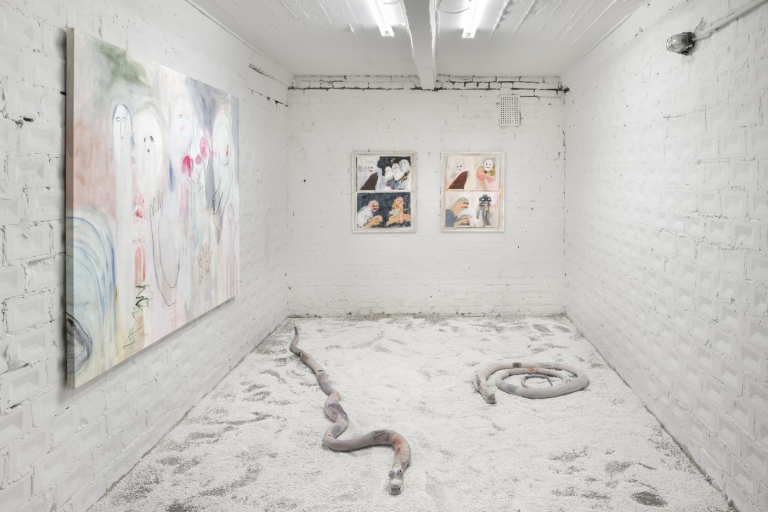Artist: Jimmy Robert
Exhibition title: la musique dans la chambre
Curated by: Nadja Quante
Venue: Künstlerhaus Bremen, Bremen, Germany
Date: February 5 – April 18, 2022
Photography: all images copyright and courtesy of the artist and ©Künstlerhaus Bremen
Jimmy Robert (b. 1975 in Guadeloupe, France) produces works on paper, photographs, collages, performances, texts, sculptures, videos and artist books. His artistic practice explores the points of contact between body and material, as well as the representations and material conditions of bodies.
In the presentation at Künstlerhaus Bremen, the artist addresses the question of how his performance works can continue to be shown apart from being performed again in exhibitions. How can one approach a performance work anew without re-staging it? In this context, the exhibition will focus particularly on sound and bring together videos, works on paper as well as sculptural elements and sounds created in the framework of his performances.
Characteristic of Robert’s multi-layered works is the citation of moments or images from art history, film or literature. He often resorts to paper or fabric as the primary carrier of photographic reproductions. Taking photography as his point of departure, Robert blurs the boundaries between two- and three-dimensionality and between image and object.
His interest in dissolving the boundaries between different media also characterizes his performances, which he choreographs within exhibition spaces. For these, Robert reworks, quotes, or samples well-known (avant-garde) works in such a way as to question and complicate their previous readings. Sound plays a particularly important role in his performance works in the form of voice, spoken word, music or noise as well as in the resonance of moving materials and bodies in space.
In the video Paramètres (2012), which can be seen at the entrance to the exhibition, the artist holds A4 papers with geometric drawings and cut-out shapes against his body, while speaking a text in French. Like a chorus he repeats the phrases “Set up the parameters. Adjust the structure.” The text refers to positions, formats, and structures that form our lives.
The video Untitled (Folding 2) (2012) focuses on the artist’s hands folding and turning a paper with a photographic reproduction of a posing body. The choreography of the hand is based on the hand game rock, paper, scissors, trying different aleatory forms that make the image “dance” and the paper rustle.
In a similar manner, the artist’s body in the sculptural photographic work Untitled (Plié VII) (2020) oscillates between two- and three-dimensionality.
Robert’s artist book Revue (2020), on view in the vitrine, gathers texts and photographs from his performances from 2008 to 2020.
Gathered around the two seating elements in the back room are works created in the context of Robert’s performances Descendances du Nu (2016) and European Portraits (2017).
European Portraits (2017) is a performance and installation that Robert first presented at PEER Gallery in London in 2017. The work was created in response to the Brexit vote and highlights some of the complex personal and political consequences of this event.
The texts on the wall and pedestal are poetic text portraits of eight different individuals written by the artist, who, himself, lived in the United Kingdom for several years.
One of these texts also forms the basis for the composition of the sound for European Portraits, which can be heard through headphones and was composed by sound artist and DJ Ain Bailey, with whom Robert has collaborated on several occasions. Bailey’s composition is based on a voice recording of a text portrait. What is heard, however, are not the words themselves, but the moments of breathing and silence between the words.
Descendances du Nu (2016) is a body of work created in the context of a performance and site-specific installation at the Synagogue du Delme in France. The work is strongly influenced by the architecture of the performance space – a former synagogue. For the exhibition, Robert declines and dissects Marcel Duchamp’s famous painting Nude Descending a Staircase (1912) (French: Nu, descendant un escalier), whose motif is also recognizable as a repetitive pattern on the fabric, which can be seen on the wall both mounted as an object and in the photograph as a reproduction. The fabric was originally used for a curtain that was part of the exhibition and performance.
The two photographic prints on the standing wooden structure are complex conceptual art historical references and appropriations: The larger photograph shows a collage of Louise Lawler’s photograph Nude (2002/2003) and Elaine Sturtevant’s video Duchamp Nu descendent un escalier (1968). Where Lawler’s photograph actually shows a painting by Gerhard Richter in a museum space, Robert’s photograph shows a still from Sturtevant’s video referencing Duchamp. The smaller photo with the color fields in front of the photograph refers to Sherrie Levine’s woodcut, After Duchamp from meltdown (1989), for which Levine scanned another work by Duchamp and reduced it down to 12 color pixels. Robert in turn applied Levine’s meltdown principle to Duchamp’s nude descending a staircase. Robert’s work juxtaposes Duchamp as a patriarchal figure in art history with the appropriations and reinterpretations of various female artists of the 20th century in order to find a position for himself in the middle of this art historical legacy.
The sound work for Descendances du Nu, also composed by sound artist Ain Bailey, gives space to the voices that were absent and spatially separated in the previous use of the synagogue building. These are the female voices of the female employees who worked in or near the institution at the time of Robert’s exhibition.
The objects Descendances du Nu (Stair 1 +2) (2016) and the costume Headpiece and Costume (2016) were created in preparation for the performance and dissect the theme of stairs in a surrealistic way.
The photograph Technique et Sentiment (I) (2021) on the right wall of the gallery shows a scene in which Robert’s body poses as part of a constellation of carefully selected objects, images, drawings, and fragments of materials from his archive. It is part of a photographic series of stylized collage-like compositions depicting the body in processes of fragmentation and recomposition.
Accompanying this image in the exhibition space is the Soundscape Technique et Sentiment VI (2021), which is a sound document of a performance Robert recorded in the white cube of Tanya Leighton Gallery in Berlin, that represents the artist’s work. In the recording, a series of different movements can be heard in the space: something is dragged across the floor, something falls. It is the artist handling a long roll of paper, rolling it up, walking over it, dancing with it. With the movements, his breath becomes stronger and stronger. The presence of the body manifests itself in the sounds triggered by its forces and limits. The artist’s body is brought back into the gallery space without being present. Robert plays with the presences and absences of the studio and gallery spaces. He refers to this work as non-performance: how can one refer to performance without performing it?
-Curated by Nadja Quante
After the exhibition, a 12″ artist record will be released in cooperation with the Cologne-based artist record label Apparent Extent with contributions in relation to Jimmy Robert’s works.
Jimmy Robert, la musique dans la chambre, exhibition view, Künstlerhaus Bremen 2022, Photo: Fred Dott
Jimmy Robert, la musique dans la chambre, exhibition view, Künstlerhaus Bremen 2022, Photo: Fred Dott
Jimmy Robert, Untitled (Plié VII), 2020, installation view, Künstlerhaus Bremen 2022, Photo: Fred Dott
Jimmy Robert, la musique dans la chambre, exhibition view, Künstlerhaus Bremen 2022, Photo: Fred Dott
Jimmy Robert, Untitled (Folding 2), 2012 installation view, Künstlerhaus Bremen 2022, Photo: Fred Dott
Jimmy Robert, la musique dans la chambre, exhibition view, Künstlerhaus Bremen 2022, Photo: Fred Dott
Jimmy Robert, la musique dans la chambre, exhibition view, Künstlerhaus Bremen 2022, Photo: Fred Dott
Jimmy Robert, European Portraits, 2017, installation view, Künstlerhaus Bremen 2022, Photo: Fred Dott
Jimmy Robert, European Portraits, 2017, installation view, Künstlerhaus Bremen 2022, Photo: Fred Dott
Jimmy Robert, la musique dans la chambre, exhibition view, Künstlerhaus Bremen 2022, Photo: Fred Dott
Jimmy Robert, European Portraits, 2017, detail, Künstlerhaus Bremen 2022, Photo: Fred Dott
Jimmy Robert, la musique dans la chambre, exhibition view, Künstlerhaus Bremen 2022, Photo: Fred Dott
Jimmy Robert, la musique dans la chambre, exhibition view, Künstlerhaus Bremen 2022, Photo: Fred Dott
Jimmy Robert, la musique dans la chambre, exhibition view, Künstlerhaus Bremen 2022, Photo: Fred Dott
Jimmy Robert, la musique dans la chambre, exhibition view, Künstlerhaus Bremen 2022, Photo: Fred Dott
Jimmy Robert, la musique dans la chambre, exhibition view, Künstlerhaus Bremen 2022, Photo: Fred Dott
Jimmy Robert, la musique dans la chambre, exhibition view, Künstlerhaus Bremen 2022, Photo: Fred Dott
Jimmy Robert, la musique dans la chambre, exhibition view, Künstlerhaus Bremen 2022, Photo: Fred Dott
Jimmy Robert, la musique dans la chambre, exhibition view, Künstlerhaus Bremen 2022, Photo: Fred Dott
Jimmy Robert, la musique dans la chambre, exhibition view, Künstlerhaus Bremen 2022, Photo: Fred Dott
Jimmy Robert, la musique dans la chambre, exhibition view, Künstlerhaus Bremen 2022, Photo: Fred Dott
Jimmy Robert, la musique dans la chambre, exhibition view, Künstlerhaus Bremen 2022, Photo: Fred Dott
Jimmy Robert, la musique dans la chambre, exhibition view, Künstlerhaus Bremen 2022, Photo: Fred Dott
Jimmy Robert, la musique dans la chambre, exhibition view, Künstlerhaus Bremen 2022, Photo: Fred Dott
Jimmy Robert, la musique dans la chambre, exhibition view, Künstlerhaus Bremen 2022, Photo: Fred Dott
Jimmy Robert, Technique et Sentiment I, 2021, exhibition view, Künstlerhaus Bremen 2022, Photo: Fred Dott



